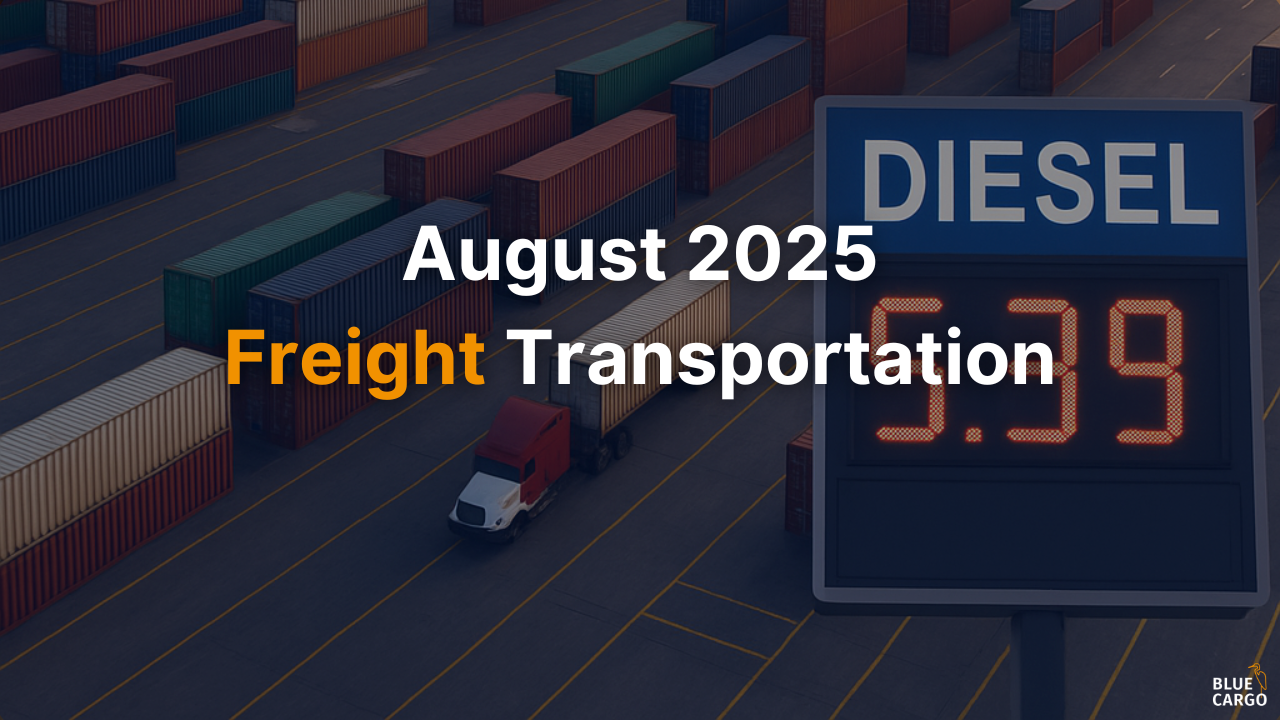
August 2025 Freight Market Update: Ocean Rates, Rail Trends, and Fuel Insights for Shippers
Date: August 8, 2025
Ocean Freight Market: Rates Ease, But Volatility Ahead
Spot container rates declined 3% last week to $2,424 per FEU (page 3), marking the eighth consecutive weekly drop.
The latest Bloomberg report indicates that while the softening in shipping rates lowers short-term costs, it warns of ongoing rate volatility through 2025–2026 as carriers deploy new vessel capacity and rebalance supply.
Carriers with diversified service networks, such as Maersk, may provide more consistent schedules and inland service reliability. However, no operator is immune to potential general rate increases (GRIs), blank sailings, or last-minute adjustments.
Key numbers from the Bloomberg report:
- Spot container rate: $2,424/FEU
- Weekly change: –3%
- Consecutive weeks of decline: 8
- Risk factors: new vessel capacity in 2025–2026, potential blank sailings, GRIs
Why this matters for shippers:
- Current relief is likely temporary; keep carrier diversification active.
- Tighten invoice audits for GRIs, PSS, bunker/ETS, and currency line items.
- Prepare alternate routings for critical lanes.
Rail Freight Market: Stable Service, Lower Volumes
North American rail traffic fell 3.6% year-over-year in the week ending August 2 (page 3). Stronger grain shipments offset weakness in coal, metals, and automotive freight.
Class I railroads posted Q2 results broadly in line with expectations, indicating stable service performance and adequate network capacity.
Key numbers:
- Rail traffic change: –3.6% YoY
- Sectors down: coal, metals, autos
- Sector up: grain
- Service stability: Class I railroads meeting earnings expectations, no major operational disruptions.
Why this matters:
- Capacity and dwell times should remain predictable.
- This period is optimal to renegotiate free-time/storage terms.
- Intermodal options can offset trucking fuel exposure.
Supply Chain Macro Trends: Demand Sluggish, Inventory Builds
The ISM Manufacturing PMI remains near contraction territory, while industrial production is flat (page 11).
The inventory-to-sales ratio continues to edge up, pointing to lingering inventory overhang in some sectors.
If this persists, expect:
- Delayed early-quarter bookings in ocean freight.
- Looser trucking spot market conditions.
Fuel Price Outlook: Lower Than Peaks, Still Above Pre-2021 Norms
The HWYDUSTL diesel index shows U.S. on-highway diesel prices stable week-over-week, but still elevated compared to pre-2021 averages (report page 12). WTI crude prices are similarly stable following earlier spikes in 2025.
Key numbers from the report:
- Diesel index (HWYDUSTL): ~138 (Jan 2021 = 100 baseline)
- Relative level: ~38% above pre-2021
- WTI crude: stable vs. early 2025 highs
Why this matters:
- Despite flat weekly changes, fuel surcharges remain structurally high.
- Recalibrate surcharge tables to reflect today’s elevated base levels.
Action Plan for Shippers: August to October 2025
- Audit Ocean Freight Invoices Weekly
- Apply lane-specific checks for GRIs, bunker/ETS, LSFO/MGO conversions, and currency factors to prevent cost leakage.
- Leverage Rail to Optimize Inland Costs
- With rail volumes down 3.6%, test intermodal routings for long-haul moves to cut trucking costs and fuel risk.
- Update Fuel Surcharge Tables
- Reset to match current HWYDUSTL index (~138) to ensure fair recovery without over- or under-charging.
- Prepare for Uneven Q4 Ocean Capacity
- Keep backup routings and pre-approved spot bid workflows ready for high-risk lanes.
How BlueCargo Helps Shippers Protect Budgets
- Automated dispute resolution for carrier invoice variances.
- Weekly variance dashboards comparing rate agreements to invoices, tracking fuel index changes, and highlighting accessorial trends.
- Quarterly business reviews with lane-by-lane recommendations for carrier mix and routing.
----
Source: Logistics Lee’s Lowdown – Bloomberg Intelligence, August 2025
Request the REPORT.
----
Schedule a meeting with the BlueCargo team


